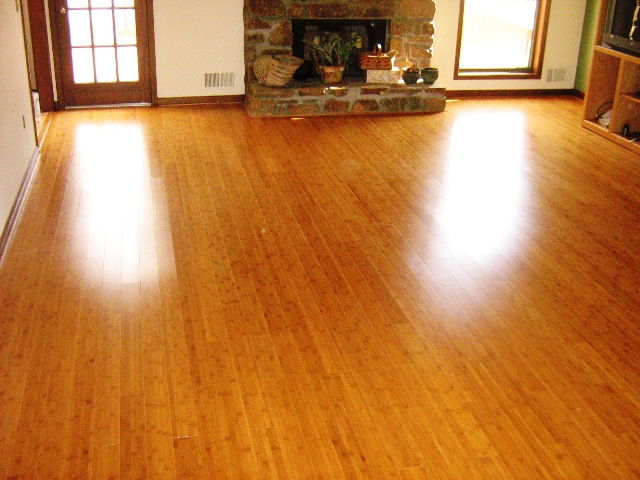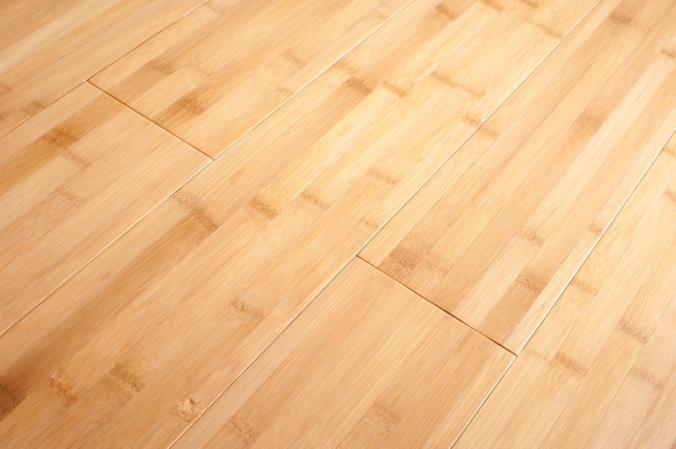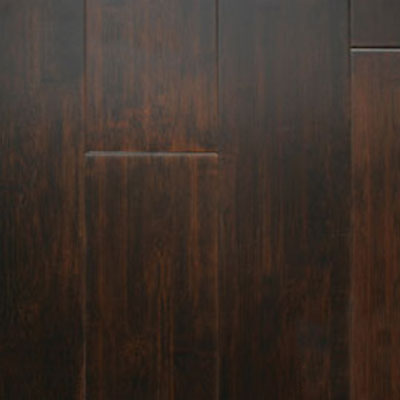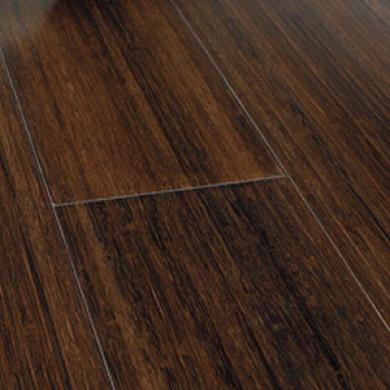Whether you’re in the flooring industry, a renovation enthusiast or simply a home or business owner, I’m sure you’re constantly hearing or reading about hardwood flooring. Often included in that noise is some buzz about bamboo, especially in this age of eco-consciousness. Bamboo often conjures images of beauty and zen and offers the idea of something very natural and environmentally friendly. While bamboo has some great qualities, and can be an excellent flooring choice, I’m here to shed some light onto this increasingly popular flooring material.
Bamboo vs. Solid Wood
Bamboo, is not, in fact, a hardwood. It’s not technically wood at all. Its actually a type of fast growing grass. How fast? It generally replenishes itself in between 3-7 years depending on the varietal. Unlike trees, which, once harvested, are essentially used up, bamboo regrows, or continues growing even once cut. Considering tree species can take anywhere from 50-120 years to mature for harvesting, this certainly makes bamboo seem like a great renewable flooring source.
Bamboo even has natural anti-microbial and anti-fungal properties, which can be great when considering a flooring material.
Types of Bamboo Flooring
There are three main types of bamboo flooring available, and each has its pros and cons.
1) Engineered Bamboo Flooring
Also known as horizontal cut bamboo flooring, this type, as its name implies, is a veneer of bamboo glued onto a solid substrate, much like engineered wood flooring. Engineered bamboo flooring is instantly recognizable because it looks just like flattened stalks of bamboo laid side by side, the distinct ring pattern repeated across the planks/floor.
2) Solid Bamboo Flooring
This type of bamboo flooring is also known as vertical cut bamboo flooring. Solid bamboo flooring is made by cutting bamboo and gluing the pieces together. This tends to be stronger than the engineered variety of bamboo flooring. Aesthetically, it has thinner stripes due to the numerous pieces of bamboo being compressed together.
3) Strand-woven Bamboo Flooring
Strand-woven bamboo flooring is created by shredding the bamboo and compressing it together with adhesives to form the planks. It is the strongest of the three main types of bamboo flooring. However, it looks the least like whole bamboo, although it comes in the widest range of colors and finishes. It can be the most “toxic” because of all the processing, although plenty of manufacturers use perfectly safe processes and adhesives.
How It’s Made
I mentioned earlier that bamboo does have to go through a bit of processing to be transformed into a workable flooring material. The process goes, essentially, something like this:
First, the exterior (shoots, etc.) is stripped, and then the stalks are cut into strips which are called “logs”. It is then boiled to purify it, removing any remaining bugs, sugars in the stalk, etc. These logs are then dried in a kiln after being sorted into grades (A or B) based on quality. Finally, the logs are “milled” into “blanks” which is what bamboo boards are called once they’re formed into planks.
When it comes to the final color of the bamboo flooring, there are three main options/processes that occur at varying points during production. If left essentially untreated, once boiled, the logs are a light, almost blond color. Many times, the producer will opt to leave the bamboo in this “natural” state. After all, one of the reasons people choose bamboo is because it looks like bamboo. On the other hand, the logs can be carbonized under high pressure steam which lends deeper, caramel tones. Carbonization happens after the purification process and dyes the bamboo throughout versus simply staining the surface. Bear in mind, this weakens the bamboo, which can be a serious factor when selecting your flooring. Or, the logs can also be stained any number of colors, which is especially popular in the strand-woven varieties as they tend to look nothing like actual bamboo anyway.
Eco-Factors
So, how green is bamboo, really? The answer is, it depends. On a very basic level, all bamboo grows rapidly, can be cut without killing it, and doesn’t require a ton of pesticides as it is naturally anti-microbial and anti-fungal. Bamboo also draws water up and improves soil quality. It is exceptionally hardy and for this reason is highly sustainable and fairly easy to harvest responsibly.
However, there are numerous factors to consider. Firstly, almost all of the bamboo flooring used in the North America and Europe is grown in China and smaller amounts from Vietnam. The carbon foot-print left from simply transporting the material is something to consider. Incidentally, transport also (obviously) factors into the overall monetary cost.
More importantly, though, are the byproducts and materials used in processing the grass into boards. The main concern is urea-formaldehyde and phenol which are toxic. Some of the cheapest bamboo boards are processed using toxic adhesives, etc. and even emit gasses once installed. Most shoppers nowadays are eco-savvy which has resulted in most manufacturers using water-based, solvent free adhesives and finishes and are minimally toxic and do not off-gas toxins. Some boards lie in between. Unfortunately, manufacturers don’t always clearly label their bamboo products. This makes it especially important to do your research. Green Building Supply has a great formaldehyde chart that can point you in the right direction and help you ask your supplier the right questions when selecting your bamboo flooring.
The Nitty-Gritty
Now that we’ve demystified a little bit of the eco-hype surrounding bamboo flooring, let’s get down to brass tacks. How does bamboo really stack up against solid wood floors?
Durability
The relative “hardness” of different solid wood floors is rated by the Janka Scale. Due to its burgeoning popularity, bamboo has been added to the scale even though its not technically wood. Bamboo’s hardness varies widely, and this is based on several factors, which include the age that it was harvested, the particular species of bamboo, what type of board It is (Engineered, Solid or Strand) as well the overall quality of the product. Engineered and Solid varieties of bamboo boards range from 1180 to 1700 on the Janka scale (depending on quality) which is comparable to domestic pine and beech, respectively. Strand cut boards come in at a whopping 3000, which is comparable to Ipe, a.k.a Brazilian Walnut, the mack daddy hard hardwoods. Therefore, the idea that bamboo is insanely durable doesn’t always hold true, although it obviously can be. Bear in mind, domestic Red Oak, which is the hardwood benchmark, clocks in around 1290, so you aren’t going to find bamboo boards that “soft” either.
Cost
Depending on the quality of the product bamboo flooring, including installation, generally runs from $4.50-$7.50 per square foot. According to Angie’s List, on average, hardwood floors cost $7.00-$12.00 per square foot. The quality and varieties of hardwoods varies much more widely than bamboo, but as a general rule, bamboo tends to be cheaper.
Look and Longevity
The classic question – will it stand the test of time? Aesthetically, bamboo is generally considered to be much more modern looking. Whether this distinct look will still be desirable decades down the line is questionable. Strand cut bamboo boards, which also happen to be the most durable, now come in a wide variety of stains and finishes and don’t necessarily look like a stalk of bamboo. However, bamboo floors can also be rather difficult to refinish, so options become more limited.
Solid wood floors, on the other hand, are much more traditional and classic, although classic can sometimes read as stale. While hardwood floors are generally easier to refinish and can last ages with proper maintenance, so much depends on which wood you’ve chosen to begin with.
The Final Rundown
So a quick recap – bamboo can be a great, eco-friendly option, comparable to hardwood floors, and a bit easier on the pockets. However, you need to know what you’re looking for and which questions to ask. Its not what I would call a substitute, but a great alternative depending on your particular needs.
For additional reading:
http://www.remodelista.com/posts/remodeling-101-the-mystery-of-bamboo-floors-uncovered
http://home.howstuffworks.com/home-improvement/home-diy/flooring/bamboo-flooring.htm



